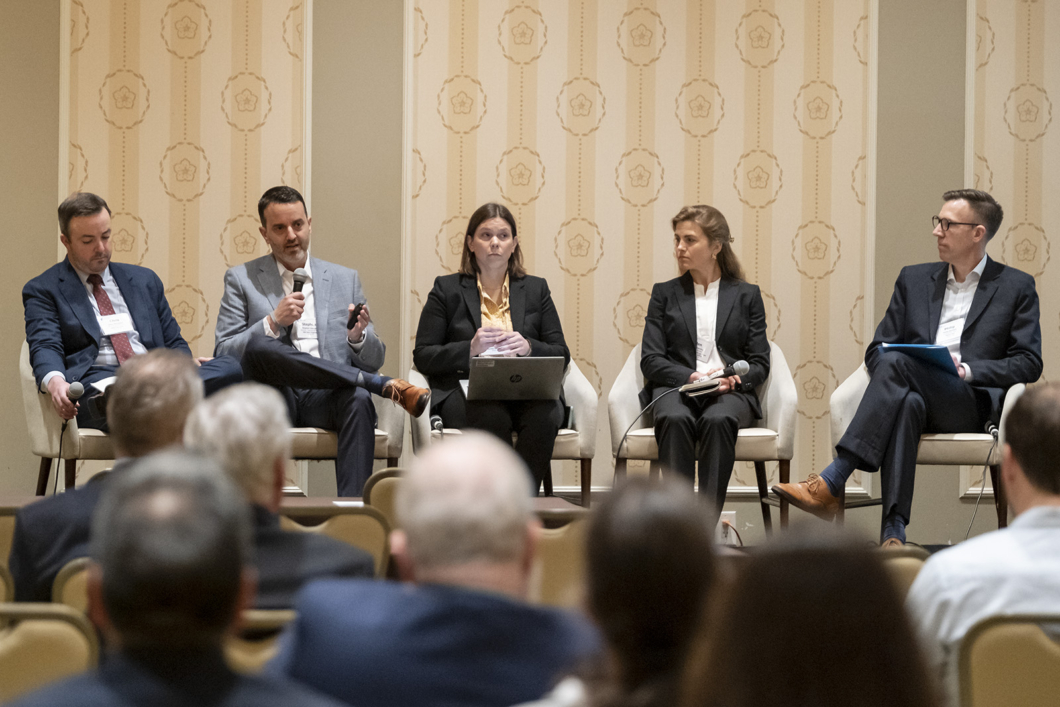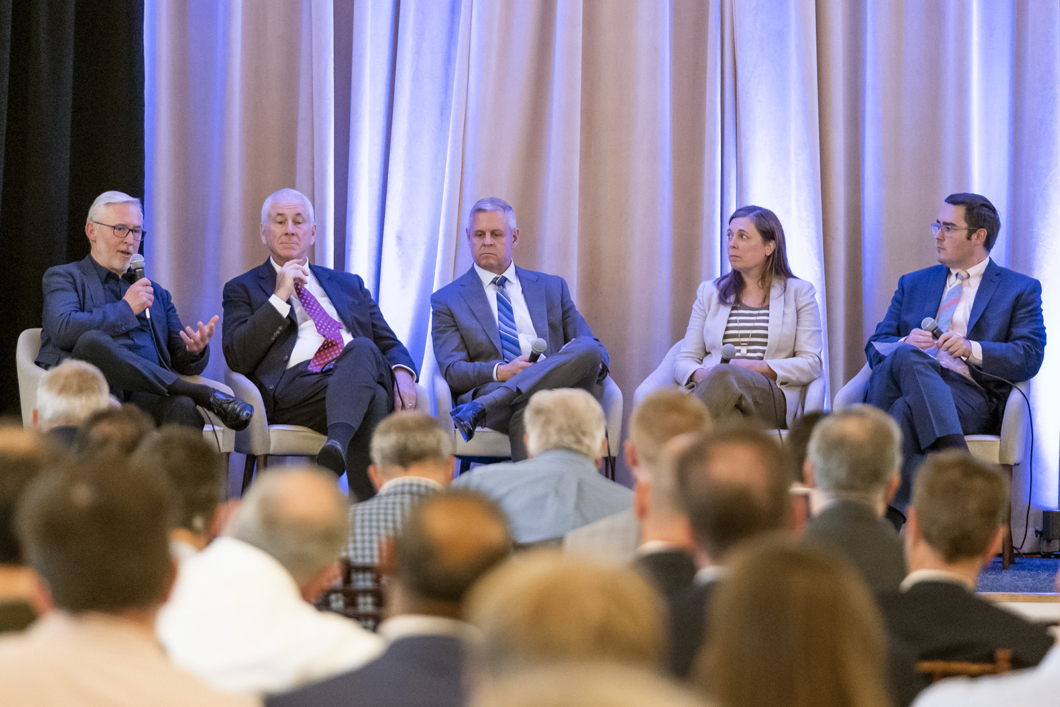ISO-NE leaders discuss region’s energy future at public utilities conference
Several ISO New England leaders offered perspectives on the region’s evolving energy landscape at this year’s New England Conference of Public Utilities Commissioners Symposium.
Held May 19-21 in Bretton Woods, New Hampshire, the conference featured panels on a number of topics related to power system reliability and the clean energy transition.

Stephen George, director, Operational Performance, Training, and Integration, participated in a discussion titled “Retail Demand Response and Load Flexibility.” George described the ISO’s groundbreaking early warning system for energy shortfall risks, known as the Probabilistic Energy Adequacy Tool, and ongoing work with stakeholders to develop a reliability-based risk threshold. The threshold would inform regional decision-making about managing potential energy shortfalls.
Retail demand response programs can play a role in mitigating shortfalls, George said. Utilities manage the programs, which reduce consumer demand for grid electricity. But unlike demand response programs that participate in the region’s wholesale electricity markets, the ISO’s system operators do not typically receive advance notice about when retail demand response programs will start or stop, or how much they are expected to reduce system load. Still, George said of the programs, “On a peak day, something like this can help a lot.”

Speaking in her capacity as the former chair of the Federal Energy Regulatory Commission (FERC), ISO New England Board of Directors Chair Cheryl LaFleur participated in a “fireside chat” with Commissioner Michael Caron of the Connecticut Public Utilities Regulatory Authority. LaFleur discussed the ISO’s collaborative relationship with the New England states, noting how state policies aimed at decarbonizing the economy are driving ISO initiatives. Examples of this close working relationship, she said, include the development of a recent proposal for new transmission planning processes, as well as state support for the ISO’s request to delay the next Forward Capacity Auction as it develops a new capacity market structure.

In a roundtable with other industry chief executives, President and CEO Gordon van Welie outlined the ISO’s four pillars for a reliable, cost-effective energy transition: large amounts of clean generation, balancing resources to ensure reliability, energy adequacy, and robust transmission. Managing these four variables in the face of increasing electricity demand will be crucial over the next 25 years, van Welie explained. “We need alignment between each one of those four pillars and a coordinated, synchronized response to be able to meet that demand,” he said.
Other conference panels on the energy industry explored the coordination of the natural gas and electric systems, greenhouse gas emissions data, and the intersections of competitive markets and public policy.
Founded in 1947, NECPUC provides regulatory assistance to the New England states’ public utilities commissions, and addresses issues challenging the electricity, gas, telecommunications, and water industries.
- Categories
- Events
